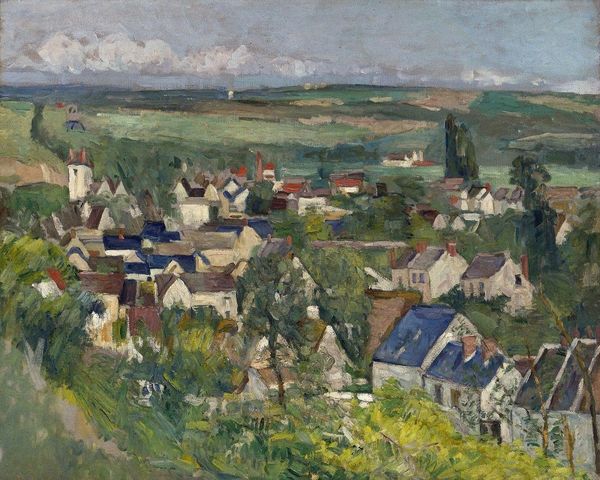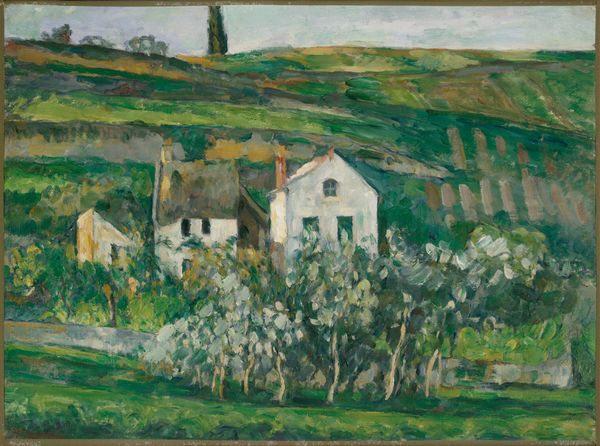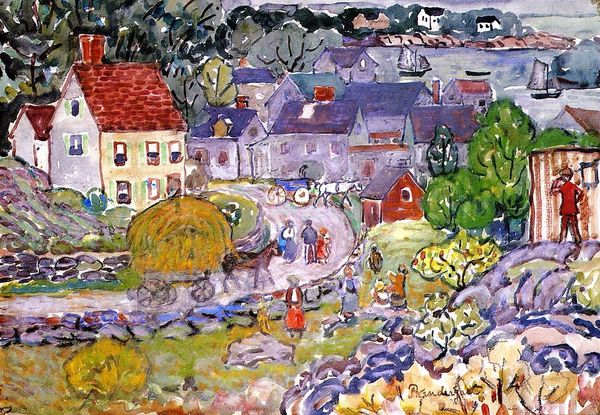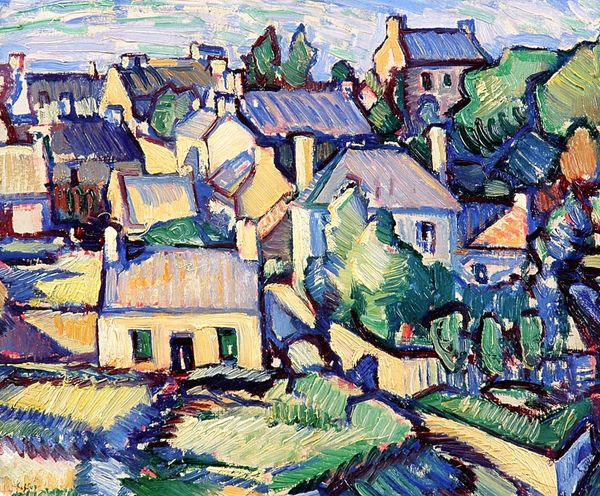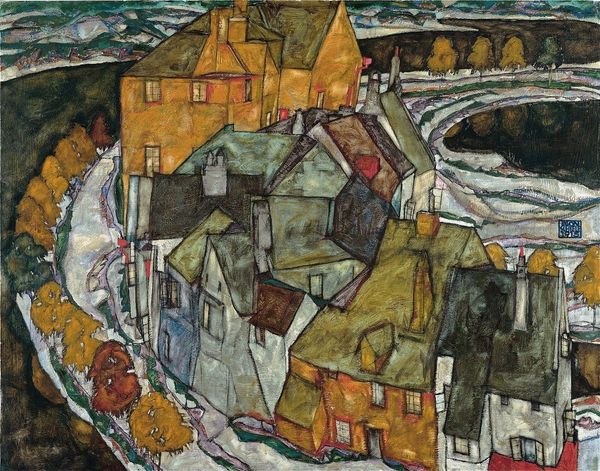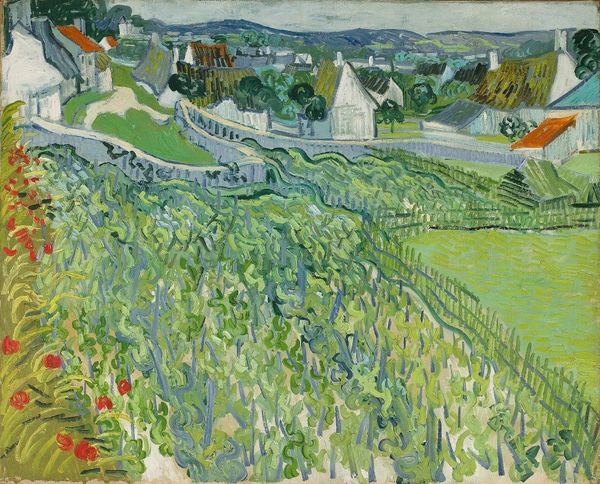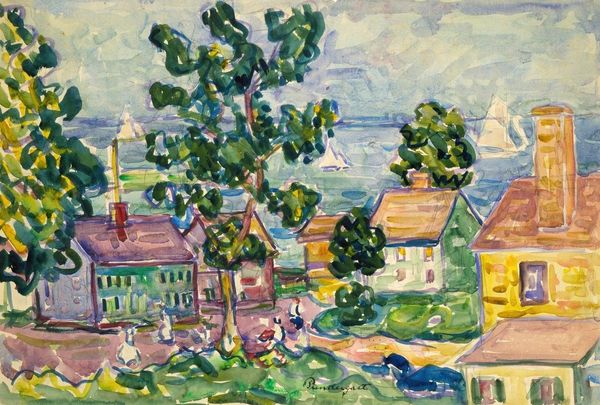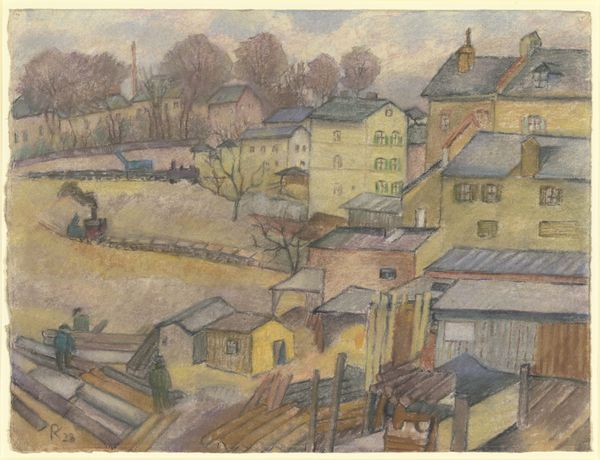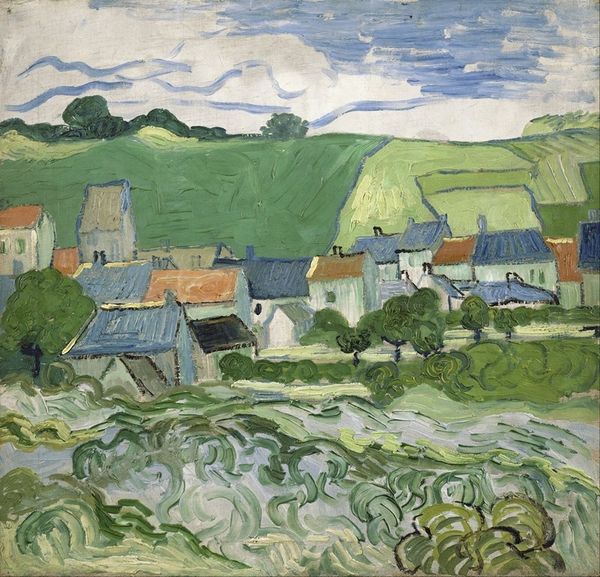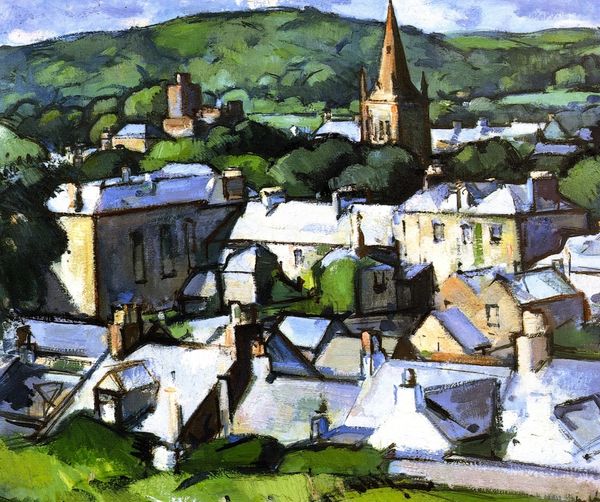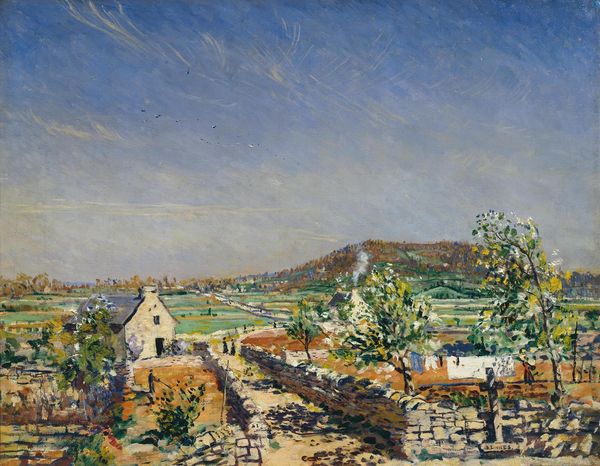
Dimensions: 19 1/8 x 23 1/2 in. (48.58 x 59.63 cm) (sight)29 3/8 x 33 3/8 x 2 1/2 in. (74.61 x 84.77 x 6.35 cm) (outer frame)
Copyright: No Copyright - United States
Curator: What strikes me first is how... dense it feels. Like a carpet of buildings cascading down a hillside. Editor: Well, you've pinpointed it nicely. What we have here is Walter Elmer Schofield's "Mining Village in Cornwall," an oil on canvas he painted around 1920. Curator: Mining, huh? There's an undercurrent of grit beneath that sun-drenched surface. Look at how he renders the slate roofs, a patchwork of cool greys against the brighter whitewashed walls. Those roofs seem to bear a heavy history. Editor: Precisely! Those sturdy slate roofs weren't just practical; they symbolized permanence, resilience— the backbone of a community weathering economic and social change. It really digs into the heart of landscape as cultural record. Curator: I notice that he emphasizes a meandering road. Roads function so potently as a connective tissue through time and place, binding disparate narratives of culture, economy, migration, and power! It guides your eye, pulling you deeper into the village's heart. Editor: I agree, there's this invitation to get lost in the labyrinth. Schofield manages to give it an impressionistic vibe, a breezy sort of holiday, whilst holding in tension an authentic vision of place that transcends postcard aesthetics. Curator: And the perspective! The slightly elevated viewpoint reminds me of medieval townscapes. There is the effect of feeling simultaneously within and apart from that tight-knit society. Editor: Like peering in, slightly removed. Almost…nostalgic, though perhaps from a place or time Schofield himself never fully knew. It definitely echoes with a collective past, resonating layers deep within our cultural psyche. Curator: It has made me think about what a sense of place really means. It is all interwoven in our memory. Editor: Right? So, it appears as a tranquil village scene, but stirs something…else. Good art, you know? Leaves you a little unsettled, a little richer.
Comments
minneapolisinstituteofart almost 2 years ago
⋮
Born in Philadelphia, Schofield first studied art at the Pennsylvania Academy before taking up studies in Paris in 1892 at the Académie Julian. The strict regimen of the academy did not agree with him, however, and he abandoned Paris for the Forest of Fontainbleau where he returned to painting directly from nature, much as he had done during his student years in Pennsylvania. Although he became an expatriate who lived in a succession of British cities, he maintained close contact with his American colleagues and, today, is generally considered a member of the Pennsylvania Impressionist group. Schofield found much inspiration in the surroundings of Cornwall (a region where he and his British wife first lived) and the contrasts between the quaint cottages and the expansive horizons of the Cornish coast were the basis of many works. The tipped-up landscape, high horizon line, and bravura brushwork--as well as a liberal use of saturated blues--are all hallmarks of the artist's style.
Join the conversation
Join millions of artists and users on Artera today and experience the ultimate creative platform.
